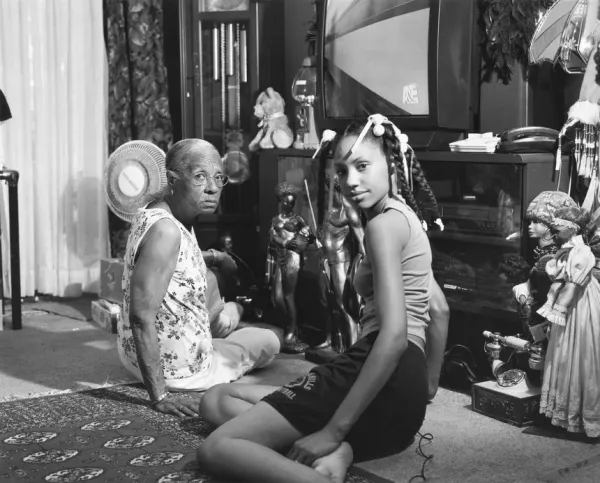10 Lessons Gordon Parks has taught me about photography

Introduction
Gordon Parks (1912 to 2006) remains one of the most influential American photographers of the twentieth century. His camera was both a mirror and a window, reflecting the harsh realities of the nation while offering a glimpse into lives too often overlooked. Born in Fort Scott, Kansas, Parks rose from humble beginnings to become the first Black staff photographer at Life magazine.
He was also a filmmaker, writer, and composer. His legacy is one of artistry fused with advocacy. As he once said, he used his camera as a weapon against injustice, creating images that continue to stir the conscience.
I still remember the first time I encountered Parks’s work. It was American Gothic, Washington, D.C. (1942), a portrait of Ella Watson, a Black woman standing solemnly with a mop and broom in front of the American flag. That single image captured the pain, pride, and complexity of America. Since then, I’ve immersed myself in his collections—Segregation Story, Harlem Gang Leader, and his powerful essays in Life. Each body of work reveals Parks’s rare ability to combine documentary grit with poetic composition.
In this post, I share ten lessons I’ve drawn from Gordon Parks. These lessons continue to guide my own photographic journey. Parks didn’t just document the world, he changed it. Whether you’re a visual storyteller or someone moved by powerful imagery, I hope these reflections offer inspiration and direction.
The Enduring Influence of Gordon Parks
Parks taught me early on that photography isn’t just about capturing moments. It’s about telling stories. His images carry narrative weight, emotional depth, and urgent commentary. As he famously put it, the camera was “my choice of weapons.” Through it, he challenged injustice, evoked empathy, and invited dialogue.
Reading his autobiography, A Choice of Weapons, deepened my belief in the transformative power of photography. Parks confronted racism and poverty with courage and clarity. Even in our digital age of instant sharing, I often think back to his integrity and intention. Every frame he created was crafted with care and carried a responsibility to represent the truth.
Who Was Gordon Parks?
Born in 1912 in segregated Kansas, Gordon Roger Alexander Buchanan Parks endured racism, violence, and homelessness by the age of fifteen. Despite the odds, he taught himself photography after buying a secondhand camera.
In 1941, he joined the Farm Security Administration (FSA), documenting poverty and inequality across America. He later worked with the Office of War Information and the Standard Oil Photography Project. His national breakthrough came in 1948 with Harlem Gang Leader, a Life magazine essay that led to a long tenure as a staff photographer.
Beyond photography, Parks was a novelist, poet, musician, and filmmaker. He directed The Learning Tree in 1969 and the iconic Shaft in 1971. But his most enduring contribution is his photography, which bears witness to injustice with profound humanity. He died in 2006, leaving behind a body of work that continues to resonate.
10 Lessons from Gordon Parks
1. Use the Camera to Drive Change
“I picked up a camera because it was my choice of weapon against what I hated most about the universe: racism, intolerance, poverty.” — Gordon Parks
For Parks, photography was not a passive act. It was a form of resistance. In photo essays like Harlem Gang Leader and Freedom’s Fearful Foe: Poverty, he used his lens to confront social ills and awaken public consciousness.
Takeaway:
Let your camera speak to the causes you care about. Whether it’s environmental decline, racial inequality, or mental health, your art can raise awareness. Partner with local organisations and use your skills to tell stories that matter.
2. Lead with Empathy
Parks often said that his own experiences with discrimination helped him understand others’ pain. His work radiates empathy, not exploitation, offering dignity to those he photographed.
Takeaway:
Spend time getting to know your subjects. Listen to their stories, understand their world, and share your intentions. That connection will be reflected in your images.
3. Don’t Let Circumstance Define You
Parks faced poverty and racism throughout his life, but he never let them stop him. He found a way to create, even with limited resources.
“Success is measured by the obstacles you overcome.” — Gordon Parks
Takeaway:
Start with what you have. Great photography is about vision, not gear. Seek out mentors, build community, and keep moving forward.
4. Combine Truth with Beauty
Parks blended raw documentary work with artistic composition. His images are both truthful and visually compelling, balancing grit with grace.
Takeaway:
Use composition and light intentionally. Think about colour, framing, and visual flow. A poetic image can deepen the viewer’s emotional response to difficult truths.
5. Stay Curious and Multidisciplinary
Parks didn’t limit himself. He explored music, writing, film, and poetry. Each outlet added new dimensions to his storytelling.
Takeaway:
Try new forms of creativity. Write, direct, experiment. Every medium brings something valuable to your photographic eye.
6. Centre Humanity
In projects like Invisible Man and his coverage of the Civil Rights Movement, Parks focused on people and their emotional lives. He made the unseen visible.
Takeaway:
Look for emotion in your subjects. A glance, a gesture, or a quiet moment can tell more than a dramatic scene. Let your images humanise, not just document.
7. Push Beyond Your Comfort Zone
Parks refused to stay in one lane. He shot fashion for Vogue, did celebrity portraits, and directed films. He followed the story wherever it led.
“The subject matter is so much more important than the photographer.” — Gordon Parks
Takeaway:
Try something new. Switch genres, learn new techniques, step into unfamiliar territory. Growth lives in the unknown.
8. Collaborate with Communities
Parks built relationships with his subjects. He listened, adapted, and co-created narratives. His work with Red Jackson in Harlem Gang Leader is a great example.
Takeaway:
If you’re photographing a community you’re not part of, listen closely. Ask for feedback. Be transparent about your intentions. Collaboration builds authenticity.
9. Lead with Compassion
Parks risked safety and comfort to tell the stories he believed in. His compassion fuelled his courage.
“The guy who takes a chance, who walks the line between the known and unknown, who is unafraid of failure, will succeed.” — Gordon Parks
Takeaway:
Let compassion be your guide. Ask yourself why the story matters to you, and make sure your intention is to serve, not just to capture.
10. Tell the Truth, Not Just a Perfect Story
Many of Parks’s most iconic photos aren’t technically flawless, but they resonate deeply because they are honest.
Takeaway:
Don’t chase perfection at the expense of truth. Focus on what the image says, not how polished it looks. Vulnerability and imperfection often carry the most weight.
Conclusion
Gordon Parks’s life is a lesson in how photography can be used to open hearts, challenge injustice, and inspire change. He overcame poverty, racism, and rejection to become a pioneer in American photography and film. His work urges us to create with purpose, care, and courage.
From him, we learn to use the camera with intention. We learn to combine beauty with truth, to lead with empathy, and to seek out authentic connection. We learn that storytelling matters more than perfection, and that passion must be grounded in compassion.
If you are moved by his work, I encourage you to visit the Gordon Parks Foundation to explore his photography and learn more about his legacy. By applying his principles to our own creative journeys, we ensure that the conversations he started continue today—with clarity, integrity, and heart.
Add your voice
Through The Black Gaze, we don’t just reflect the world, we reshape it. Your story matters. Share it. Honour it. Hold space for others. This is where truth lives and vision leads.
We invite Black photographers to contribute in two meaningful ways through story and image.






